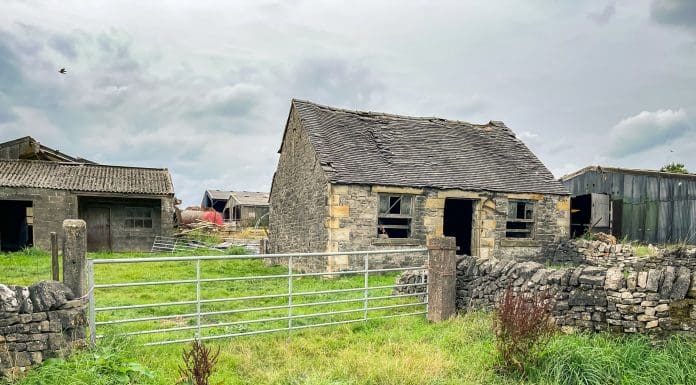
Charlotte El Hakiem and Jacqueline Jackson, planning directors at Marrons, discuss how further reforms to planning policy can benefit the country’s farmers
With economic, political and regulatory changes piling on the pressure for the agricultural sector, farmers are in desperate need for support with every facet of their livelihoods. As part of the latest ‘New Deal’ announcements by environment secretary, Steve Reed, has certainly attempted to address the shortfalls in the planning system for farmers, in addition to other issues that hinder efficient farming, but whether these reforms go far enough has been called into question.
To improve the viability of farming in the UK, reforms to the planning system have been highlighted as playing a key part in facilitating these changes and the upcoming spring consultation is intended to help cut red tape for farmers and form a policy that will support both income diversification and food production.
Although not revolutionary, the reforms are expected to comprise small tweaks to existing planning policy, which should help speed up planning decisions in order to allow farmers to build the infrastructure they need.
Recent planning policy reform has helped
Additional changes to permitted development rights, introduced in May 2024, made it easier for farmers to change use classes of agricultural buildings to dwellings under Class Q or to commercial buildings under Class R, which were expected and welcomed. To date, changes have made it easier for farmers to diversify their income streams, allowing them to more easily turn disused buildings into farm shops, wedding venues, holiday lodgings, or other profit-making amenities.
While this has certainly helped farmers diversify portfolios, it has overlooked ways to support the increase in food production.
Diversification has become a double-edged sword. It is integral to a farm’s survival in the current climate; however, it can also take the focus away from a farm’s primary purpose: producing food. This can potentially decrease the farm’s overall output and affect the food and beverage sector as a whole. Successful farming protects food production but also allows farmers to diversify to remain viable and releases land for development.
How planning reform can go further for farmers
The planning reforms made last year have been criticised by some for over-focusing on supporting income diversification, inadvertently de-prioritising food production, and the upcoming changes may address this imbalance.
Currently, the buildings that can be converted using permitted development rights, such as Class Q and Class R, are restricted by various conditions, including size, suitable access, and how long they have been classed as agricultural buildings. These restrictions don’t consider how farming has modernised and changed over time.
For example, machinery has become much bigger and requires larger storage space. Being able to make changes to an agricultural building, for example, by adding an extension or constructing larger barns to store modern equipment without requiring planning permission, would be beneficial for farmers, as well as aid food production rather than income diversification.
Although permitted development rights do not require planning permission, they are still within the planning system, and many classes require prior approval. While some think that it is an easier process, this is a misconception. With dwindling resources and increasing pressure on local planning authorities, the prior approval process is often complex and plagued by delays. This leaves farmers in limbo, unable to adapt their infrastructure quickly to fit modernised farming methods, such as larger equipment.
How simplification can benefit all
The government needs to review the criteria for permitted development rights and ask if it really is necessary for farms to need prior approval in all cases. Amendments for commercial purposes under Class R may need to be flagged to local planning authorities due to concerns such as increased noise or traffic levels. Others, however, such as new barns or farming infrastructure, may not. Not only would cutting this red tape allow farmers to quickly construct or convert their buildings to be more usable and, as a result, profitable, but it would also ease pressure on an already strained planning system in the process.
Consideration for the operational aspects of a farm was also noticeably missing from changes made in 2024. Amendments need to make it far easier for farmers to put up animal enclosures, hardstandings, or barns without being limited by arbitrary regulations or criteria. Making these more accessible to farmers could help them grow their farms and increase food production as a result.
Another likely change that would benefit farmers is being able to build flood defences more easily and freely. Flooding can hugely impact planting, harvesting, and crop rotation and, in turn, cause huge disruption to food production. Up until this announcement, flood defences aimed at protecting farmers’ crops hadn’t been high on the government’s agenda. While the previous government did set up a ‘farming recovery fund’ to support farmers whose land and livelihood had been affected by flooding or extreme rainfall, preventative measures are surely more beneficial for all parties.
While planning reform can certainly help farmers, it should in no way be thought of as a quick fix for the problems in the agricultural sector. The spring consultation and subsequent outcomes are part of a much wider 25-year roadmap for farming that covers all aspects of farming, including renewable energy, procurement, supply chain and much more. Without reform in other areas, changes to planning policy will have little impact on the sector as a whole.
With small tweaks to existing planning policy, a real difference in the lives of everyday farmers could be realised. Making planning a smoother process will play a part in helping farmers have the appropriate infrastructure to carry out their jobs and, as a result, increase food production as a whole.
The post How planning policy reform can increase food production output appeared first on Planning, Building & Construction Today.


